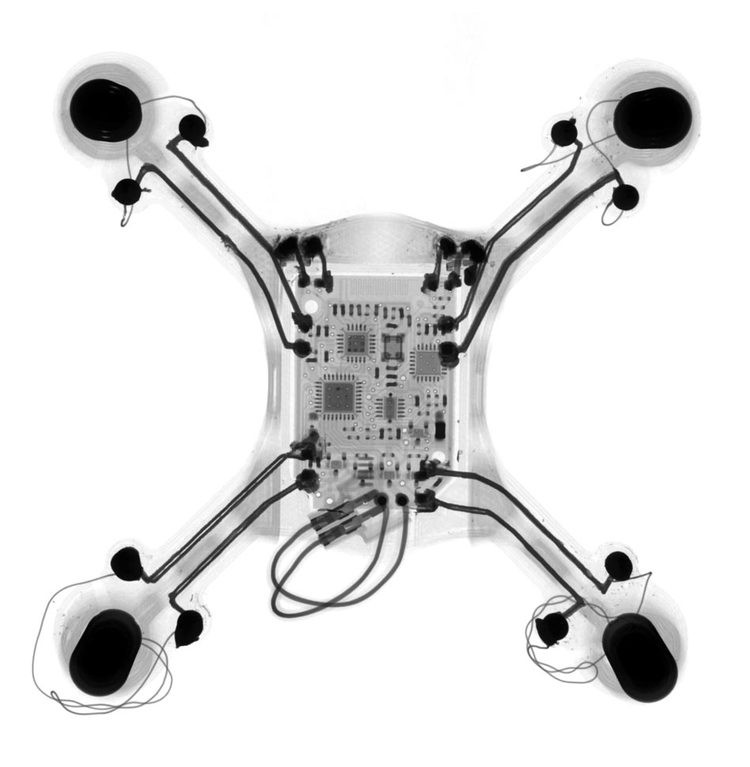3D printing of electronics on the example of a drone: wires and boards are no longer needed

A picture of a drone printed on a 3D printer
3D printing of electronics with conductive circuits inside - you no longer need wires and circuit boards; the printer will stop at exactly the time when you need to place the processor, transistor or battery, and then continue printing.
Michael Sitvera's article from Medium.com is translated for you by Top 3D Shop .
Drones printer
“You cannot print the iPhone (for the time being)” - this is how I wrote in my e-book on 3D printing just six months ago. This statement was part of a section dedicated entirely to what 3D printers cannot do.
')
This section is becoming obsolete every day, which has become particularly clear recently when Voxel8 ( Pronounced “voxelate”, from “voxel” - a three-dimensional pixel. Editor's Note ), founded and managed by several professors at Harvard and MIT, presented a developer kit for 3D printer electronic devices.
With this kit, engineers and designers will be able to print drones, telephones and remotely controlled vehicles, with all the built-in electronics. The printer has a modular structure for printing both electronic circuits and plastic parts. One printhead squeezes out PLA plastic, creating the bulk of the object, while the other prints electronic circuits using ink with very high electrical conductivity. As the printing process proceeds, the printer automatically stops (thanks to Autodesk’s smart program) so that the designer can insert electrical components, such as motors and resistors, into the product. After this is done, the printer will automatically continue printing from the point where it was interrupted.
Battery printing
In the future, Voxel8 plans to improve the printer by developing new “inks” that can print resistors, sensors, and even lithium-ion batteries. It will also make the printing process much more efficient, because designers do not have to wait for the printer to stop to place components.
Why is this so important?

Voxel8 printer.
The pilot printer of the Voxel8 company is beautiful, but, most likely, in the near future you will not add it to your home interior . The cost of the first edition of the developer kit is $ 8999, without shipping and taxes.
( Information at the time of the original publication. Now the printer can be purchased for delivery anywhere in the world. In Russia it costs about 1 million rubles. Editor's Note. )
Despite the fact that you may not become the owner of this printer in the near future, you should definitely pay attention to it. The 3D printer industry has recently been in a state of stagnation because the market has become so competitive that the few users who can afford to buy them cannot choose from a substantial number of small companies. Why is this apparatus important?
This printer is important because it is part of the future. Ultimately, the price of printers for printed circuit boards will decrease. It is not excluded that soon we will see the printing of budget smartphones to order, right in the electronics stores, and it will become an alternative to ordering non-gaming machines from the third world countries. I expect that over the course of the decade, users will be able to choose the shape and color for their phones to their own taste.
In the longer term , in 15-20 years, printing electronic circuits will make 3D printers more attractive for home use.
Because of its limited capabilities, modern 3D printers simply do not justify themselves for most ordinary people. Having the opportunity to print electronics, they will become much more useful. Lost the TV remote? Type a new one. Broken smartphone charger? Print new. Is your child bored? Buy a toy model online and print it, for example, a quadrocopter. No problem.
This is your future.
With the addition of printing electronic circuits and printing from different materials, as well as lower prices and, I hope, noise levels, I expect that 3D printers will one day find a special place in every home and will play a more important role than such things like a telephone, refrigerator or dishwasher.
What prospects for 3D printing electronics do you consider most realistic for the coming years? How could it be used? What can be printed on such a device in five years, and what will it take three to four times longer? Share your opinion in the comments.
Source: https://habr.com/ru/post/454196/
All Articles